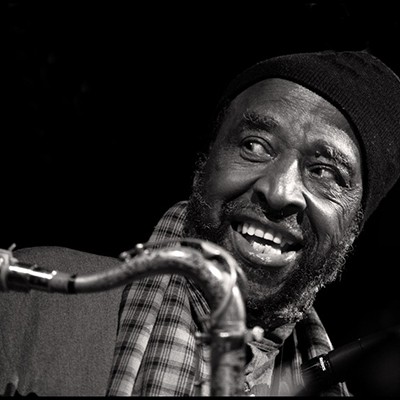
Charles Mingus
Charles Mingus is regularly acknowledged as one of the leading names in mid-20th century jazz.
Mastering the upright bass at a young age, he went on the road in the 1940s with a list of accomplished jazzers ranging from Louis Armstrong to Lionel Hampton. By the early 1950s, he’d moved to New York, where his reputation as both a player and a writer grew during stints with the bands of Charlie Parker, Dizzy Gillespie, and Bud Powell.
The 1956 release of ‘Pithecanthropus Erectus’ on Atlantic was the first of a series of recordings exploring the range of free jazz, a relatively new form featuring fast-shifting rhythms and unique harmonies. While Mingus hit a creative lull in the 1960s, when music and culture underwent a seismic shift, he came back with a vengeance in the mid-1970s, introducing a new young quintet and a more mature take on free jazz, including the influence of global music.
His music became even more powerful following his death in the late 1970s as a dedicated repertory group became the acclaimed Mingus Big Band, performing his classic works all over the world. Additionally, several box sets have been released chronicling his prolific and challenging body of work.
Spirit creatives are exploring multiple avenues to promote Mingus’s library, from inspiring young jazz artists to respectfully interpret Mingus pieces, to coordinating new compilation and tribute CDs, to licensing his work into appropriate film, television, advertising, and new media projects.
Charles Mingus is widely recognized as one of the most important figures in the history of jazz, for his virtuosity on bass, his compositions, and his outspoken political activism. Mingus Music spans genres and moods of human experience, against a backdrop to several decades of Black American Music.
Mastering the upright bass at a young age, he went on the road in the 1940s with established stars like Louis Armstrong and Lionel Hampton. In the early 1950s, he moved to New York, where his reputation as both a bassist and composer grew during stints with Charlie Parker, Dizzy Gillespie, Bud Powell, and Duke Ellington. With Max Roach he made the unprecedented move of starting Debut records to better retain control of his works.
A series of innovative albums starting in the late 1950s established his unique brand of Mingus Music including Pithecanthropus Erectus, Mingus Ah Um, Oh Yeah, and The Black Saint and the Sinner Lady, incorporating a wide range of styles including early New Orleans jazz, gospel, European classical, the blues, Ellingtonian big band, bebop, and Latin music. He also became a defining figure in the emerging avant-garde of the 1960s, touring and recording extensively and creating a workshop setting for musicians to express their creativity, launching artists such as Eric Dolphy and Rahsaan Roland Kirk. He also provided scores for film and television, including Cassavetes’ Shadows.
After a brief hiatus, Mingus returned to performing in 1970, exploring new and traditional musical forms with small ensembles and big bands, and incorporating global music influences, his touring and publishing slowed only by the onset of ALS.
His music continued its impact following his death in 1979. Formed that same year, a dedicated repertory group called Mingus Dynasty evolved into the highly acclaimed Mingus Big Band, performing his classic works all over the world and winning a Grammy award in 2011. In 1993, Charles Mingus became the first African-American composer to have his collected works acquired by the United States Library of Congress, which was also a first for jazz. Student bands throughout the world play Mingus charts and participate in a yearly Mingus competition in New York. Today, Charles Mingus is widely acknowledged as the most significant composer in jazz after Duke Ellington and Billy Strayhorn, with his collection of over 300 compositions still yielding new treasures.
Spirit creatives are exploring multiple avenues to promote Mingus’s extensive works–captivating bass solos, piano improvisations, passionate big bands— inspiring young artists to interpret Mingus pieces, coordinating new compilations and tributes, and licensing his work into appropriate film, television, advertising, and new media projects.
Licensing with Spirit: License Charles’ music HERE.








